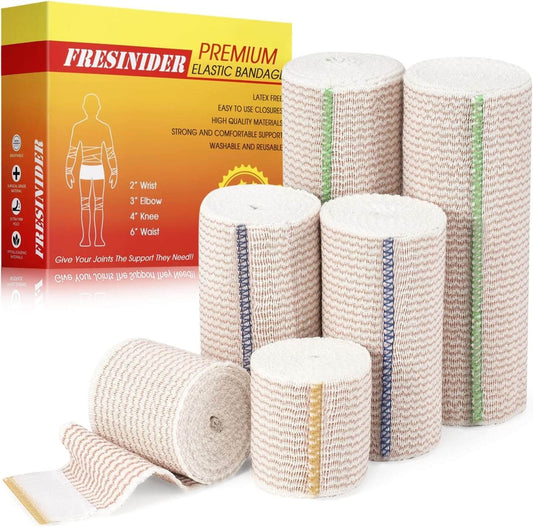Bandages protect wounds and provide compression, but wrapping too tightly can cause harm. This guide explains the risks, warning signs, proper tension, and safe techniques so you get support—without cutting off circulation.
1) Why Proper Bandage Tension Matters
A bandage should be snug, not tight. Excess pressure can restrict blood flow, compress nerves, and damage skin or soft tissue. The goal is controlled compression that supports healing while preserving normal sensation, color, and temperature in fingers or toes.
2) What Can Result if a Bandage Is Applied Too Tightly?
| Consequence | What Happens | Typical Signs |
|---|---|---|
| Reduced blood flow | External pressure narrows vessels; oxygen delivery drops. | Cold skin, pale/blue color, slow capillary refill, throbbing pain. |
| Swelling above/below the wrap | Impaired venous & lymphatic return causes fluid buildup. | Bulging at bandage edges; imprint lines on skin. |
| Nerve compression | Direct pressure on superficial nerves. | Tingling, pins-and-needles, numbness, weakness. |
| Skin injury & pressure sores | Ischemia and friction lead to blisters or ulcers. | Burning pain, redness, blisters, skin breakdown. |
| Compartment syndrome (rare) | Dangerously high pressure within muscle compartments. | Severe pain, tense swelling, numbness—medical emergency. |
3) How to Tell a Bandage Is Too Tight
- Tingling, numbness, or “pins and needles.”
- Toes/fingers turn pale, blue, or feel cold.
- Increasing pain or burning; difficulty moving distal joints.
- Swelling above/below the wrap; skin looks indented or mottled.
4) How to Apply a Bandage with Safe Tension
- Choose the right width (e.g., 2", 3", 4", 6") to spread pressure evenly.
- Start distal → proximal (farther from the heart toward the heart).
- Overlap each turn by about half the bandage width; keep the roll close to skin for even tension.
- Keep the wrap snug, not tight—maintain full sensation and normal color.
- Secure with Velcro or clips; avoid knots that create pressure points.
- Recheck in 10–15 minutes; loosen and rewrap if symptoms appear.

5) What to Do If It’s Too Tight
- Loosen or remove the bandage immediately.
- Elevate the limb above heart level for several minutes.
- Assess color, warmth, and sensation. If symptoms persist or pain is severe, seek medical care.
6) Prevention Checklist
- Pick an appropriate material (soft, breathable, latex-free) and width.
- Use steady, even tension—avoid “cinching” at the end of each turn.
- Do not leave a snug wrap on overnight unless a clinician advises it.
- Rewrap as swelling changes during the day.
- Teach caregivers the warning signs and the two-finger test.
Compliance note: This article provides general first-aid guidance and does not replace professional diagnosis or treatment. If you suspect circulatory or nerve problems under a bandage, contact a healthcare professional promptly.

FRESINIDER Elastic Bandage
- Gentle, adjustable compression — supports joints & veins
- Soft cotton, latex-free — breathable & skin-friendly
- Velcro closure — quick, secure, no clips needed
- Washable & reusable — durable daily comfort





